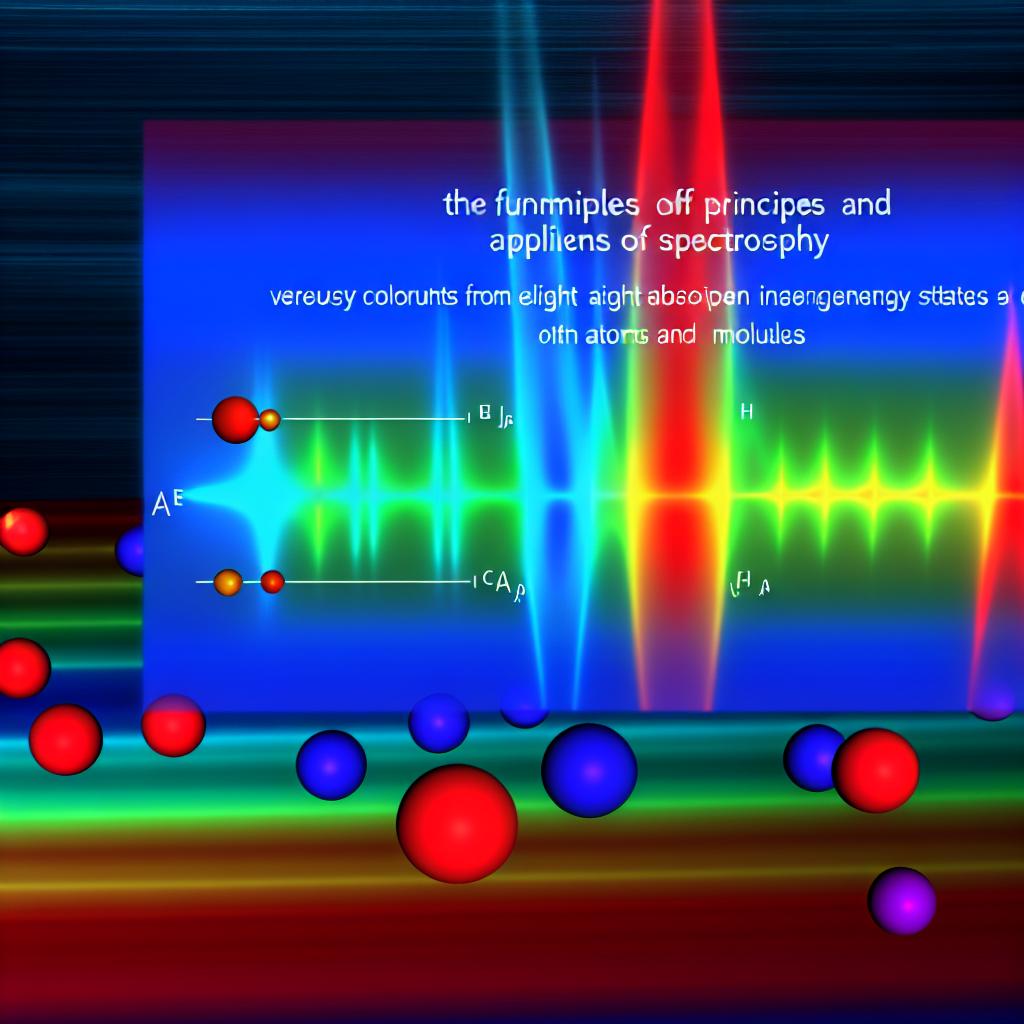A Comprehensive Guide to Types of Spectroscopy

Explore the fascinating world of spectroscopy and learn about its various types and applications.
Understanding Spectroscopy
Spectroscopy is a powerful scientific technique used to study the interaction between matter and electromagnetic radiation. It involves the measurement of the absorption, emission, or scattering of electromagnetic radiation by atoms or molecules. By analyzing the resulting spectra, scientists can gain valuable information about the chemical composition, structure, and physical properties of substances.
There are several key principles that underpin spectroscopy. One of the fundamental principles is that atoms and molecules can absorb or emit electromagnetic radiation only at specific wavelengths, which correspond to specific energy transitions. This allows scientists to identify the presence of specific elements or compounds in a sample by measuring the wavelengths of light absorbed or emitted.
Another important principle is that different types of spectroscopy are sensitive to different aspects of the sample. For example, infrared spectroscopy is commonly used to study the vibrational modes of molecules, while nuclear magnetic resonance spectroscopy provides information about the magnetic properties of atomic nuclei.
Understanding spectroscopy requires a solid foundation in physics and mathematics, as well as a grasp of the underlying principles and techniques. It is a multidisciplinary field that is widely used in chemistry, physics, biology, and materials science, among others.
Types of Spectroscopy
There are several different types of spectroscopy, each with its own set of principles and applications. Some of the most commonly used types include:
- Absorption Spectroscopy: This technique measures the amount of light absorbed by a sample as a function of wavelength. It is widely used in analytical chemistry and biochemistry to determine the concentration of a substance in a sample.
- Emission Spectroscopy: This technique measures the light emitted by a sample after being excited by an external energy source. It is commonly used in atomic and molecular physics to study the energy levels and electronic transitions of atoms and molecules.
- Fluorescence Spectroscopy: This technique measures the fluorescence emitted by a sample after absorbing light of a specific wavelength. It is widely used in biochemistry and molecular biology to study the structure and function of biological molecules.
- Raman Spectroscopy: This technique measures the scattering of light by a sample, providing information about its molecular vibrations and rotational states. It is commonly used in materials science and pharmaceutical analysis.
- Nuclear Magnetic Resonance (NMR) Spectroscopy: This technique measures the absorption and emission of electromagnetic radiation by atomic nuclei in a magnetic field. It is widely used in chemistry and biochemistry to determine the structure and dynamics of molecules.
These are just a few examples of the many types of spectroscopy available. Each type has its own strengths and limitations, and is suited to different applications. By choosing the appropriate type of spectroscopy, scientists can gain valuable insights into the properties and behavior of matter.
Applications of Spectroscopy
Spectroscopy has a wide range of applications across various scientific disciplines. Some of the key applications include:
- Analytical Chemistry: Spectroscopy is widely used in analytical chemistry to identify and quantify the components of a sample. It is used in techniques such as atomic absorption spectroscopy, mass spectrometry, and infrared spectroscopy.
- Environmental Science: Spectroscopy is used to study the composition and properties of environmental samples, such as air, water, and soil. It is used in techniques such as ultraviolet-visible spectroscopy and X-ray fluorescence spectroscopy.
- Astrophysics: Spectroscopy is an essential tool in astrophysics for studying the composition, temperature, and motion of celestial objects. It is used in techniques such as spectroscopy of starlight and cosmic microwave background radiation.
- Pharmaceutical Science: Spectroscopy is used in pharmaceutical science to analyze the structure and purity of drugs, as well as to study drug interactions with biological molecules. It is used in techniques such as nuclear magnetic resonance spectroscopy and Fourier transform infrared spectroscopy.
- Biomedical Research: Spectroscopy is used in biomedical research to study the structure and function of biological molecules, such as proteins and nucleic acids. It is used in techniques such as fluorescence spectroscopy and circular dichroism spectroscopy.
These are just a few examples of the many applications of spectroscopy. Its versatility and ability to provide detailed information about the properties of matter make it an invaluable tool in scientific research and industry.
Recent Advances in Spectroscopy
Spectroscopy is a rapidly evolving field, with new advancements and techniques being developed constantly. Some recent advances include:
- Ultrafast Spectroscopy: This technique allows scientists to study the dynamics of chemical reactions and molecular processes on extremely short timescales, typically in the femtosecond (10^-15 seconds) to picosecond (10^-12 seconds) range. It has applications in areas such as photochemistry, photophysics, and materials science.
- Single-Molecule Spectroscopy: This technique allows scientists to study the properties and behavior of individual molecules, providing valuable insights into their structure and function. It has applications in areas such as biophysics, nanotechnology, and surface science.
- Imaging Spectroscopy: This technique combines spectroscopy with imaging to create detailed maps of the spatial distribution of chemical compounds in a sample. It has applications in areas such as remote sensing, geology, and forensic science.
- Surface-Enhanced Raman Spectroscopy (SERS): This technique uses nanostructured surfaces to enhance the Raman signal, allowing for the detection and identification of trace amounts of substances. It has applications in areas such as food safety, environmental monitoring, and bioanalysis.
These are just a few examples of the recent advancements in spectroscopy. As technology continues to advance, spectroscopy will undoubtedly play an increasingly important role in scientific research and technological innovation.
Future Trends in Spectroscopy
The future of spectroscopy holds exciting possibilities for scientific discovery and technological innovation. Some potential future trends include:
- Miniaturization: Advances in micro- and nano-scale fabrication techniques may lead to the development of portable, miniaturized spectroscopic devices that can be used in a wide range of applications, from environmental monitoring to medical diagnostics.
- Multi-dimensional Spectroscopy: This technique combines multiple spectroscopic measurements to provide more detailed information about the properties of a sample. By measuring different types of spectra simultaneously, scientists can gain a deeper understanding of complex systems and processes.
- Advanced Data Analysis: As spectroscopic techniques generate increasingly large and complex datasets, there is a growing need for advanced data analysis methods. Machine learning algorithms and data mining techniques may be used to extract valuable insights from spectroscopic data and facilitate the interpretation of complex spectra.
- Integration with Other Techniques: Spectroscopy is often used in conjunction with other analytical techniques to provide a more comprehensive understanding of a sample. The integration of spectroscopy with techniques such as microscopy, mass spectrometry, and chromatography may lead to new insights and applications.
These are just a few possible future trends in spectroscopy. As technology continues to advance and our understanding of matter deepens, spectroscopy will undoubtedly continue to play a crucial role in scientific research, industry, and everyday life.



